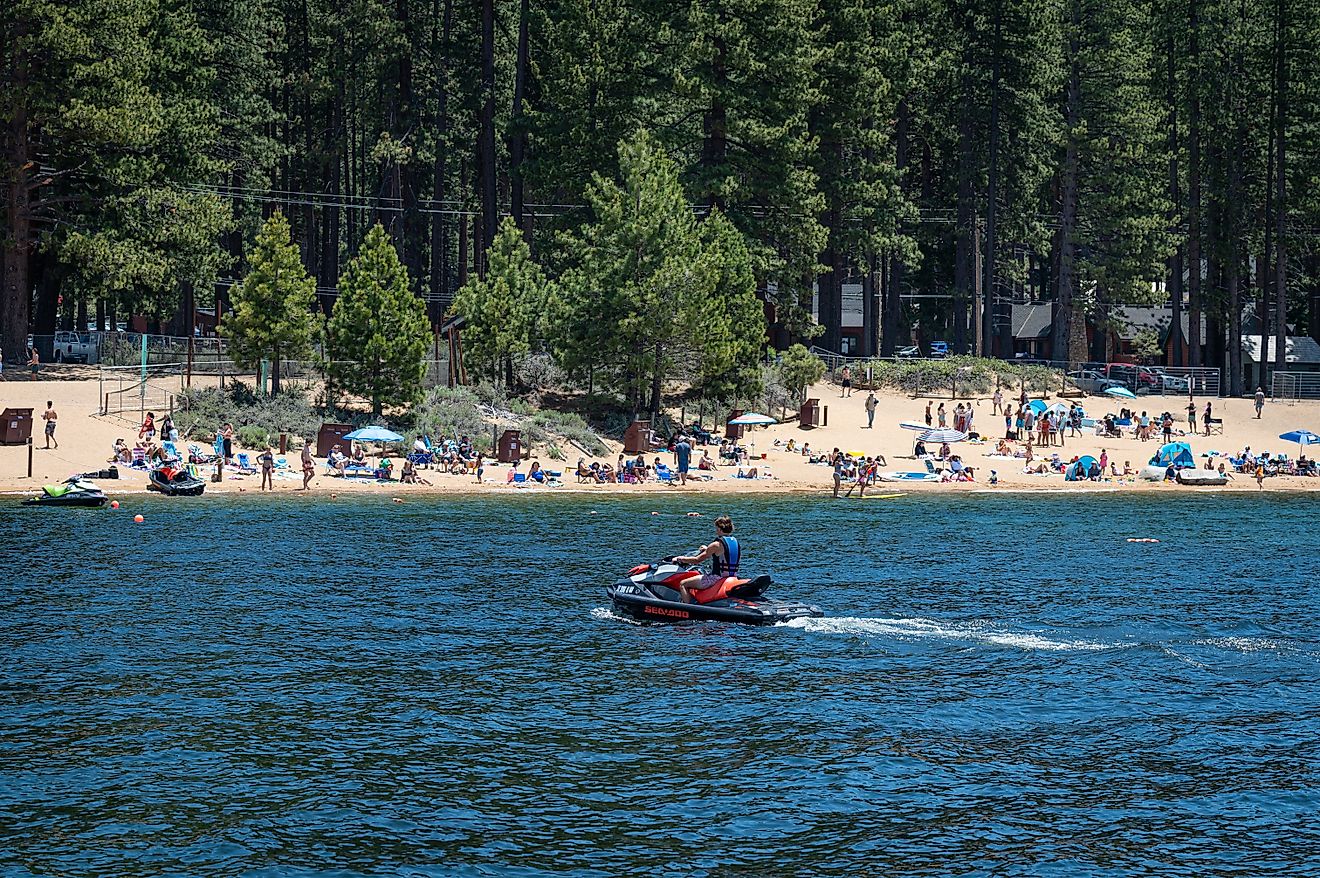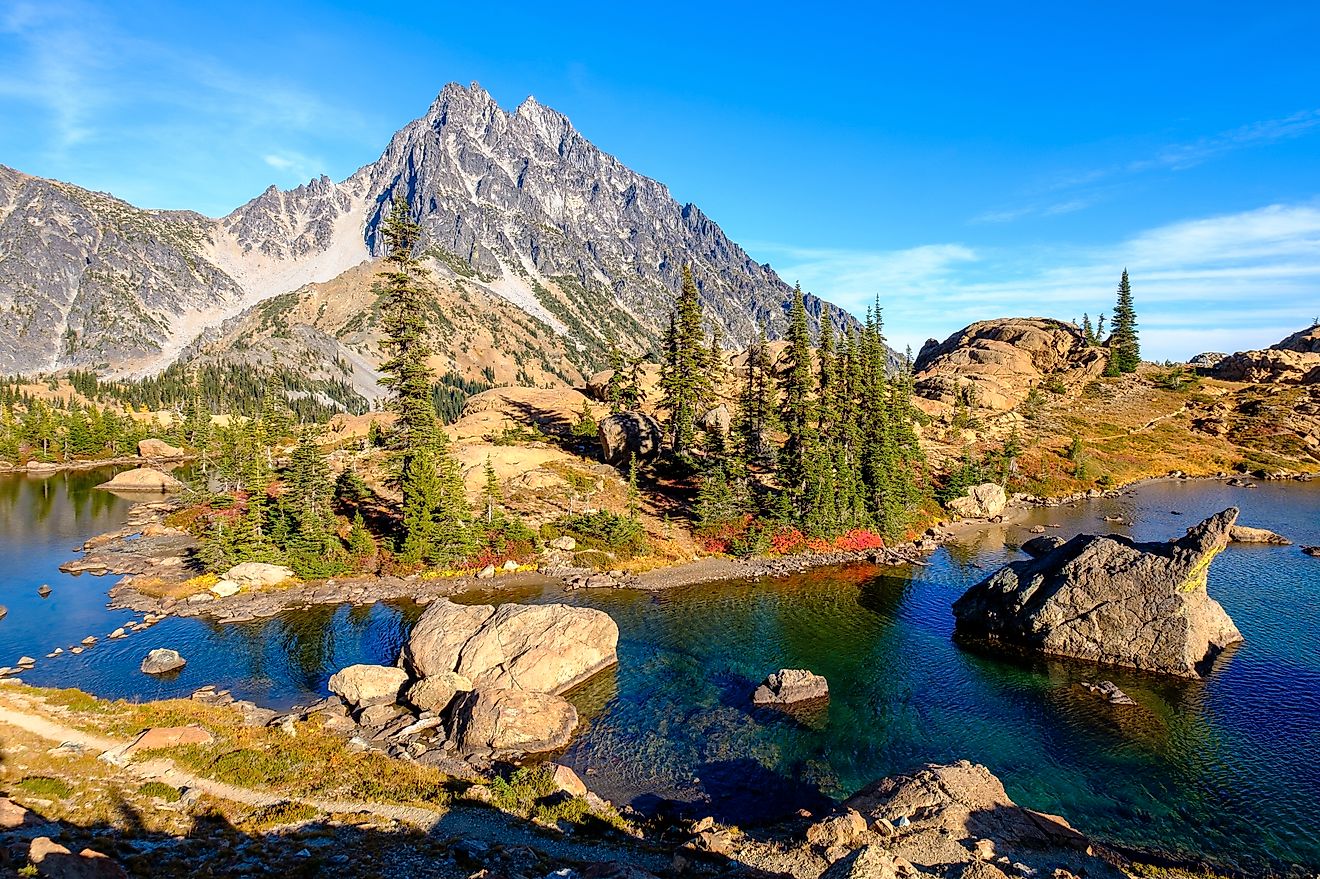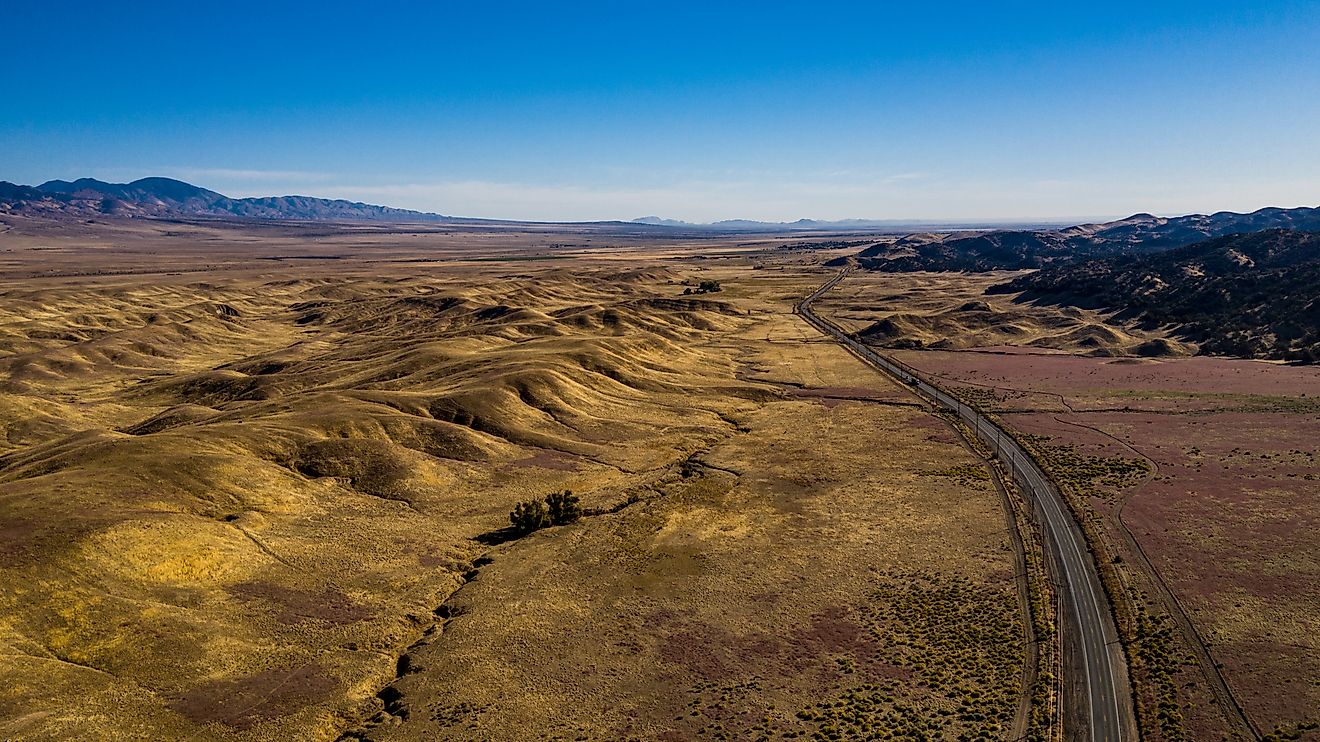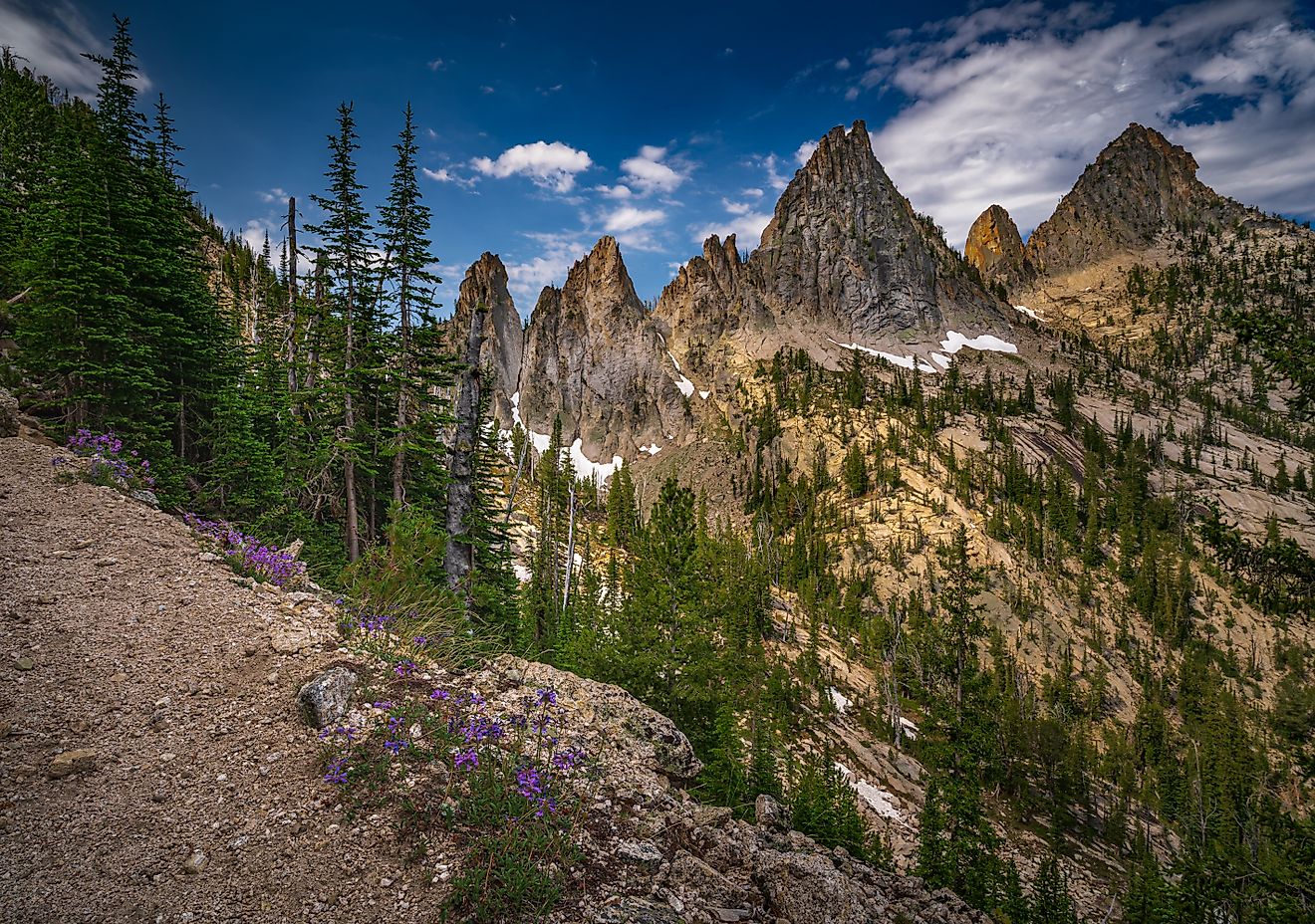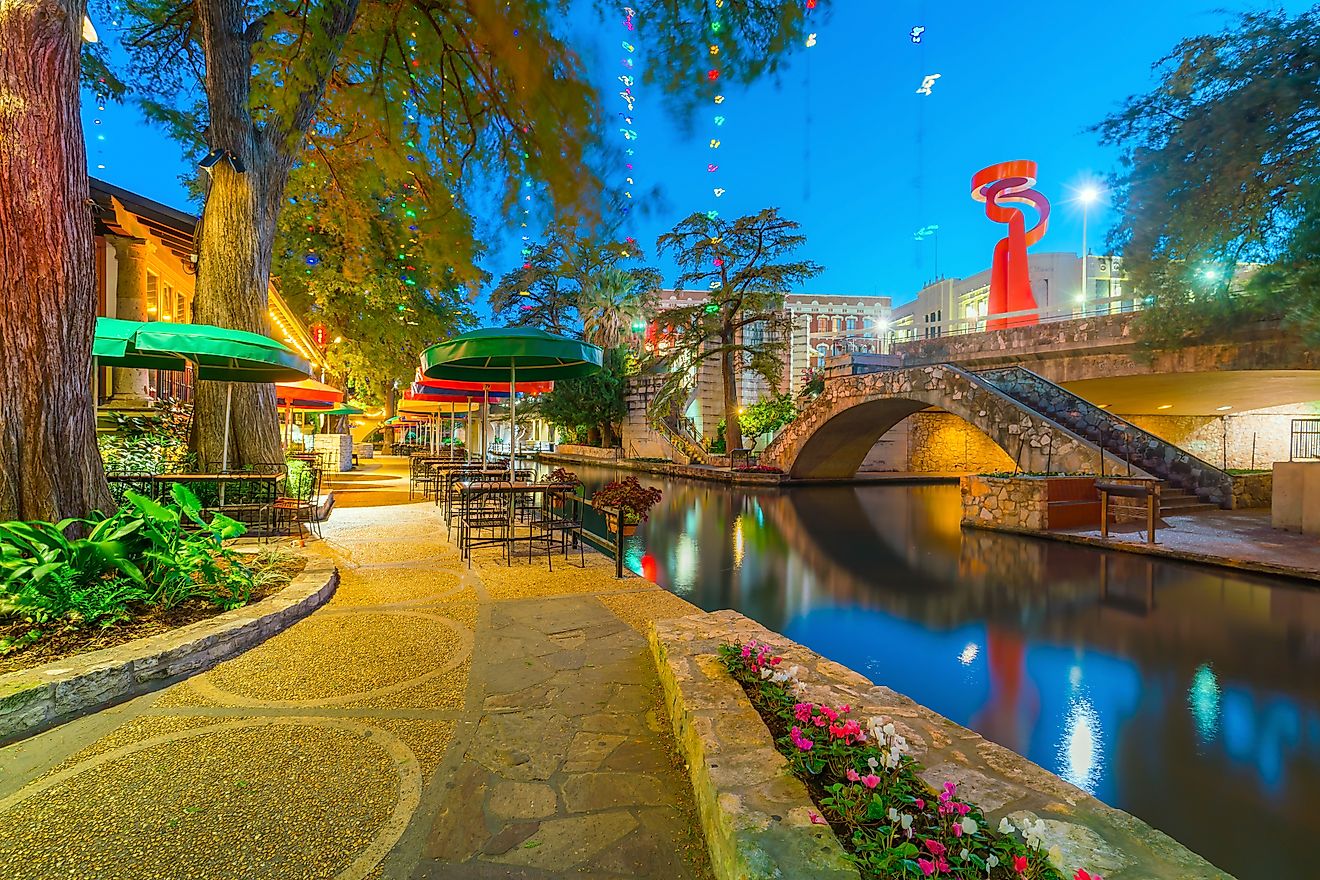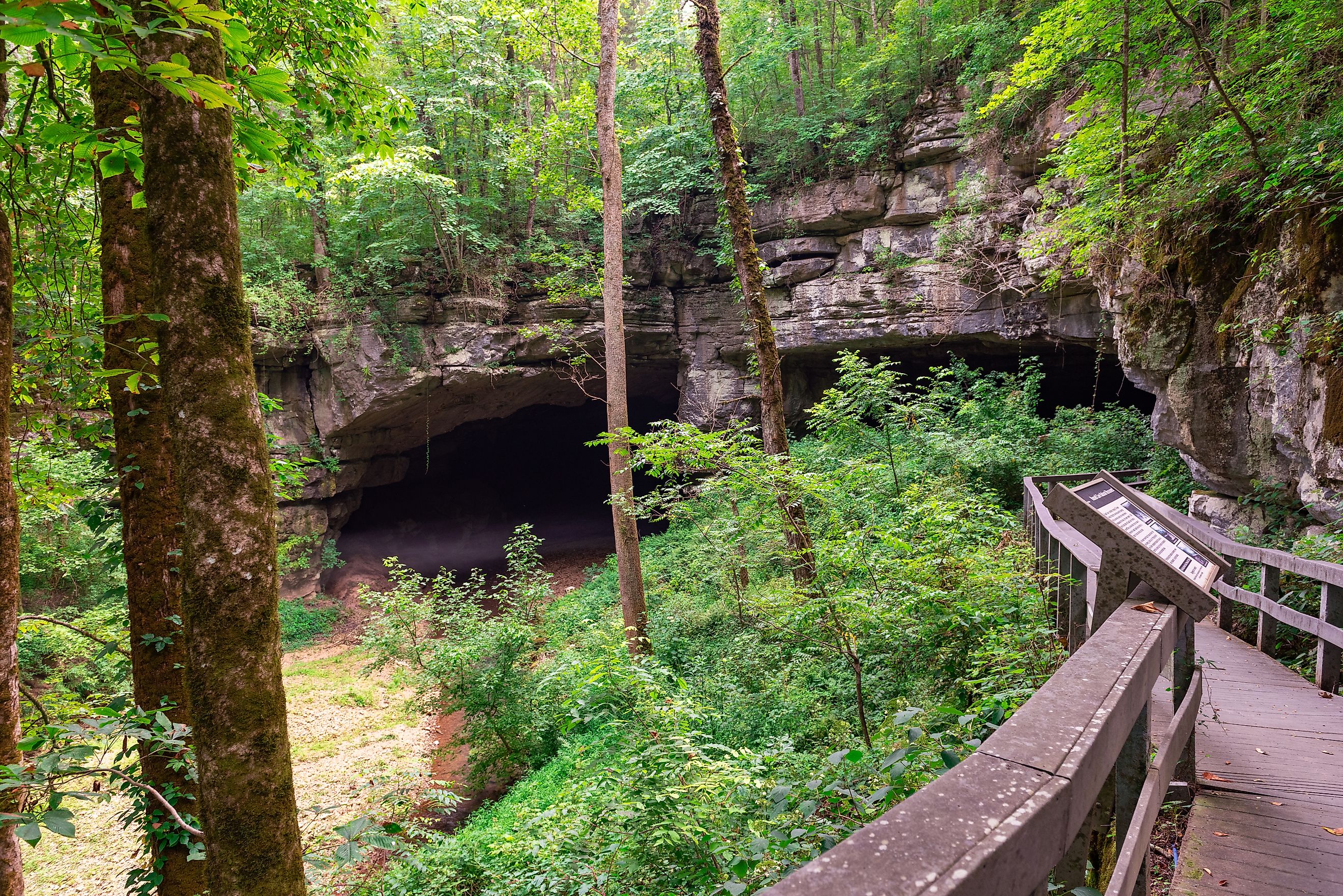
US States With the Most Caves
Caves are among nature’s most mysterious and captivating creations, offering a peek into the hidden workings of the Earth. These underground worlds reveal stories written in stone over millions of years, from glittering crystal formations to vast limestone chambers carved by flowing water. The United States is home to tens of thousands of caves, but some states stand out for their sheer abundance and variety. In these states, caves range from tight, winding passages to enormous caverns that stretch for miles, each with its own unique geology, history, and wildlife.
Beyond their natural beauty, caves have played roles in human history, serving as shelters for early inhabitants, sites of exploration, and sources of local legend. The following eight states lead the nation in cave density, offering a fascinating subterranean adventure for anyone drawn to the hidden world below.
Tennessee
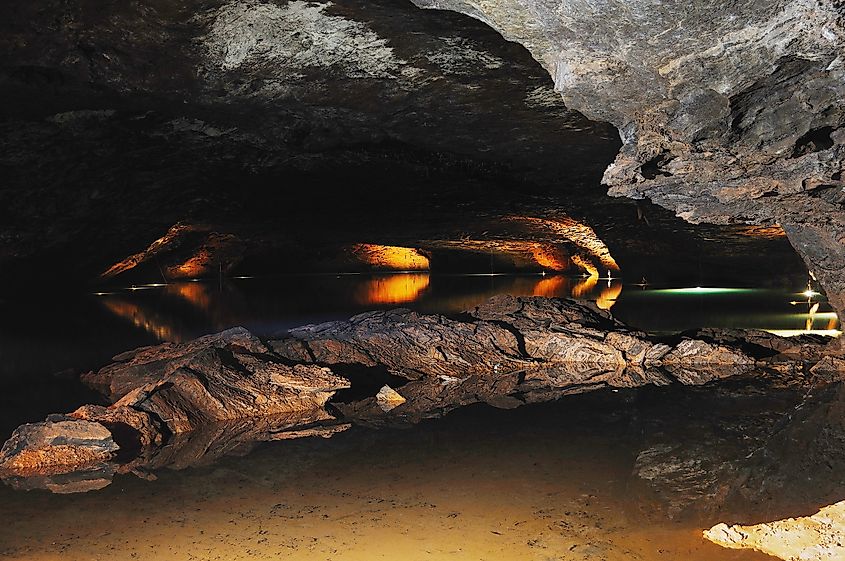
-
Number of Caves: Over 10,000
-
Notable Caves: Ruby Falls, Lost Sea Cave, Cumberland Caverns
Tennessee is widely recognized as the cave capital of the eastern United States. Much of its underground landscape is carved from limestone, creating vast caverns, stalactite formations, and crystal-clear pools. The state’s Cumberland Plateau is a hotspot for cave explorers and geologists. Ruby Falls in Chattanooga, for instance, is famous for its underground waterfall that plunges more than 145 feet into a cavern. Lost Sea Cave in Sweetwater holds the largest underground lake in the United States, with crystal-clear waters reflecting limestone formations above.
Tennessee’s caves played significant roles in early human history, with Native American artifacts found in several sites, indicating long-standing use for shelter and ceremonial purposes.
Missouri
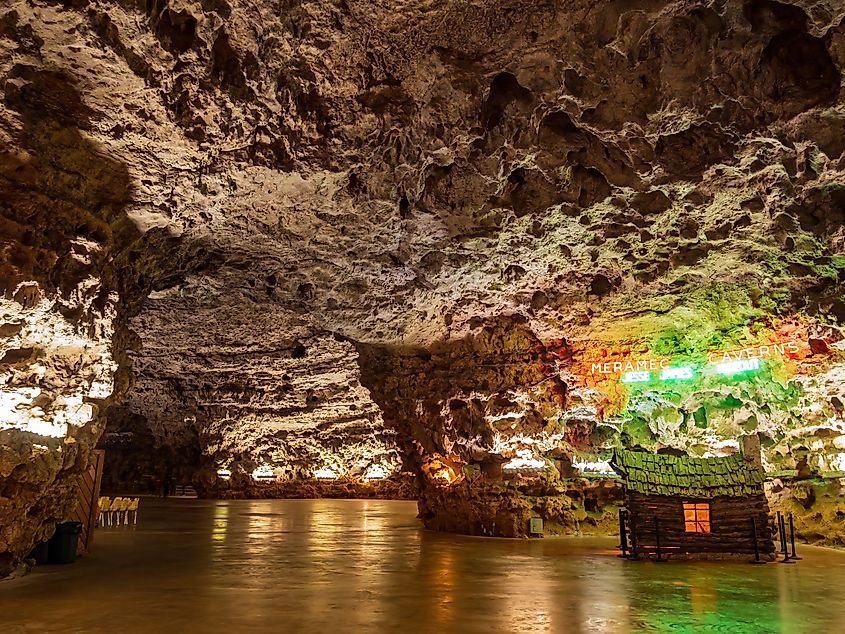
-
Number of Caves: Approximately 7,300
-
Notable Caves: Meramec Caverns, Fantastic Caverns, Onondaga Cave
Missouri’s caves are often described as some of the most extensive and accessible in the country. The state’s karst topography, characterized by sinkholes and underground streams, has produced intricate passageways and delicate formations. Meramec Caverns, near Stanton, features towering stalagmites and massive chambers that have been explored for over a century. Fantastic Caverns in Springfield can be toured entirely by jeep-drawn tram, providing a different perspective on underground life.
Missouri caves also have a colorful history of use during the 19th and early 20th centuries, serving as hideouts for outlaws, storage sites, and even saltpeter mines during the Civil War.
Kentucky
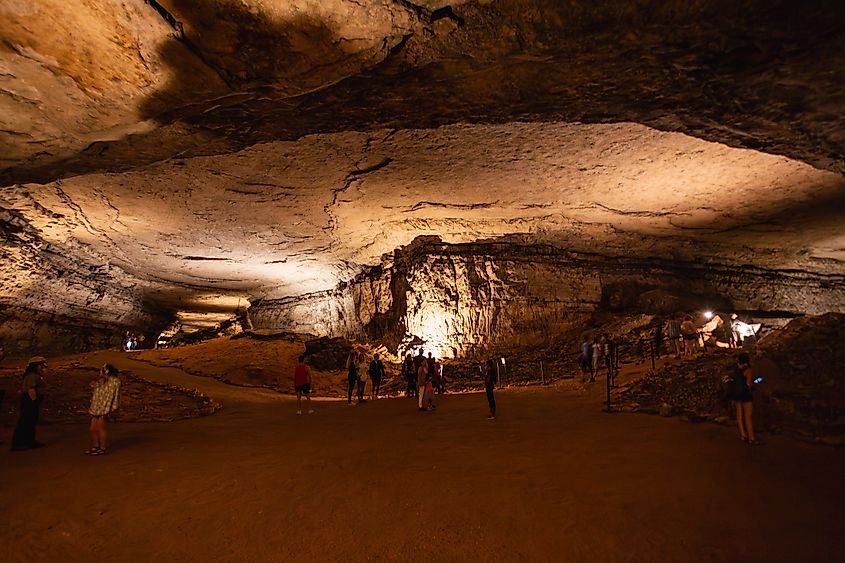
-
Number of Caves: Around 4,100
-
Notable Caves: Mammoth Cave, Lost River Cave, Cumberland Caverns
Kentucky is home to Mammoth Cave, the longest known cave system in the world, stretching over 420 miles. The caves in the state are formed primarily from limestone, and Mammoth Cave alone contains a labyrinth of passageways, domes, and underground rivers. Beyond Mammoth Cave, Kentucky’s karst landscape has created countless smaller caves that reveal centuries of geological history.
Early settlers and Native Americans used these caves for shelter, mining, and storage, leaving behind artifacts that provide a glimpse into their lives. Visitors today can walk historic tours or venture on more adventurous spelunking trips to see formations like flowstones, gypsum crystals, and delicate soda straws.
Alabama
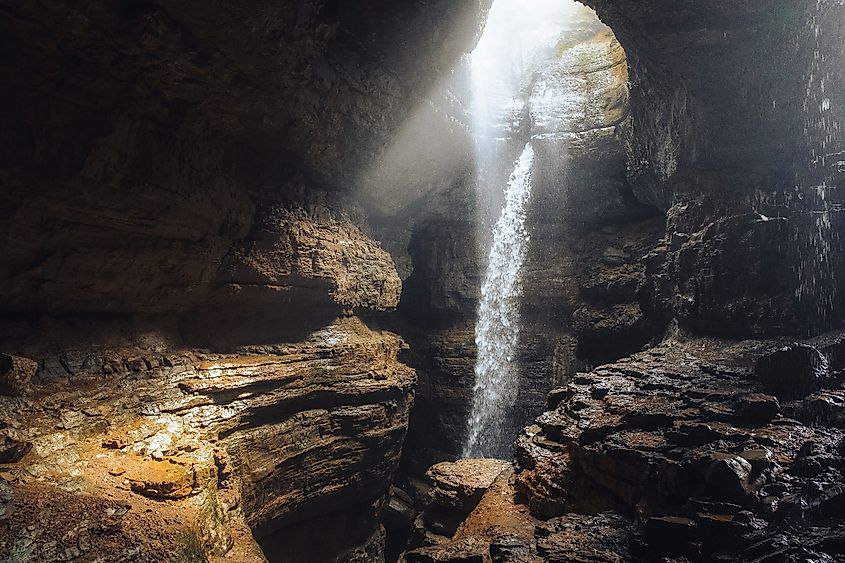
-
Number of Caves: Over 4,000
-
Notable Caves: Cathedral Caverns, DeSoto Caverns, Rickwood Caverns
Alabama is famous for its southern limestone caves, renowned for both their stunning formations and remarkable biodiversity. Cathedral Caverns features some of the largest stalagmites in the country, with towering columns that rise dramatically from the floor and appear to stretch endlessly into the ceiling. DeSoto Caverns has a rich history, once serving as a source of saltpeter during the War of 1812, and today it offers visitors dazzling crystal formations, underground rivers, and a glimpse into centuries of human interaction with the subterranean world.
Many of Alabama’s caves contain traces of prehistoric human use, including artifacts, ancient markings, and burial sites, providing an important window into early cultures. The state’s vast underground network is not only a spectacular natural attraction but also an invaluable laboratory for studying geology, hydrology, and cave ecology, supporting unique species of bats, insects, and other subterranean life that thrive in these hidden environments.
West Virginia
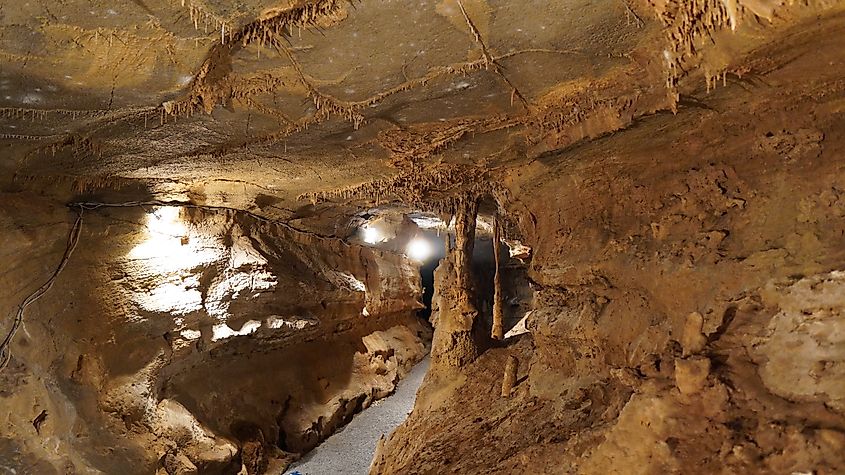
-
Number of Caves: About 3,000
-
Notable Caves: Seneca Caverns, Organ Cave, Lost World Caverns
West Virginia’s rugged terrain has created thousands of limestone caves filled with intricate speleothems and fascinating fossil deposits. Many of these caves are tucked into the rolling hills and forested valleys of the Appalachian Plateau, where underground chambers open into dramatic landscapes with soaring stalagmites, delicate stalactites, and broad sheets of flowstone. Organ Cave in Greenbrier County stands out for its historical significance, having been mined for saltpeter during both the Revolutionary War and the Civil War. Seneca Caverns and Lost World Caverns feature extensive passageways, hidden chambers, and dazzling mineral formations that captivate both geologists and tourists.
Beyond their visual splendor, West Virginia’s caves also preserve unique ecosystems, including rare cave-dwelling insects and bats, making them a vital resource for scientific study and a prime destination for adventurous spelunkers seeking both history and natural beauty underground.
Pennsylvania
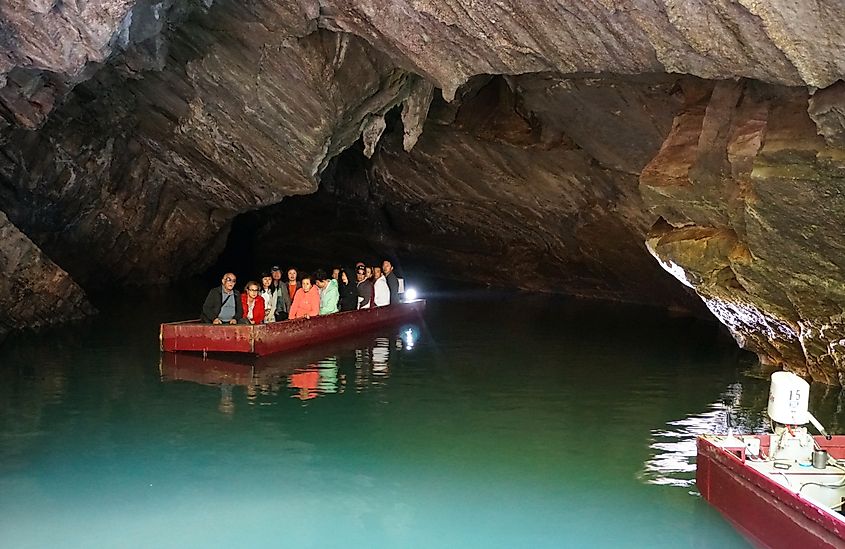
-
Number of Caves: Approximately 3,000
-
Notable Caves: Laurel Caverns, Indian Caverns, Crystal Cave
Pennsylvania’s caves are carved mostly from limestone and dolomite, resulting in a network of twisting tunnels, underground streams, and hidden chambers. Laurel Caverns, located near Uniontown, is the largest cave in the state open to guided tours, offering explorers the chance to navigate numerous interconnected passages and marvel at towering rock formations. Crystal Cave in Kutztown is famous for its sparkling calcite and aragonite formations, which catch the light and create a dazzling underground display.
Many of Pennsylvania’s caves have historical significance, having been used for mining operations, and several contain Native American artifacts, offering a glimpse into the long-standing human connection with these subterranean landscapes. Beyond their historical and cultural value, these caves provide habitats for unique wildlife and serve as natural laboratories for studying geology and hydrology in the region.
Indiana
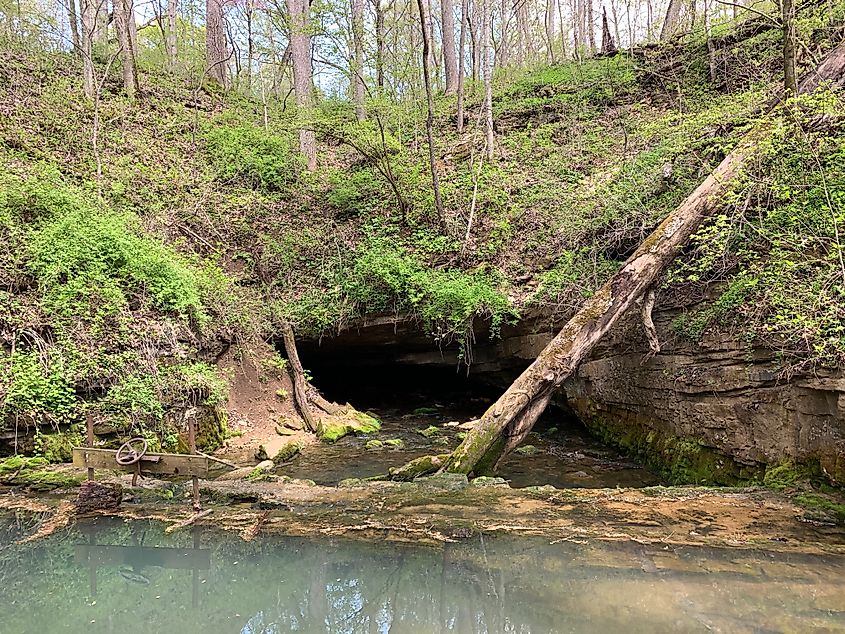
-
Number of Caves: Over 1,200
-
Notable Caves: Bluespring Caverns, Squire Boone Caverns, Marengo Cave
Indiana is home to caves with impressive geological features and a long history of human use. Bluespring Caverns is renowned for its extensive underwater passages, where guided boat tours showcase subterranean waterways and striking mineral formations. Marengo Cave features vast chambers filled with intricate stalactites and stalagmites, offering a dramatic display of nature’s artistry.
Many of Indiana’s caves were first discovered in the 19th and early 20th centuries and have since become popular destinations for both scientific research and tourism. Beyond their recreational appeal, these caves provide valuable insight into the state’s geological history and serve as habitats for diverse species of bats and other cave-dwelling wildlife.
New York
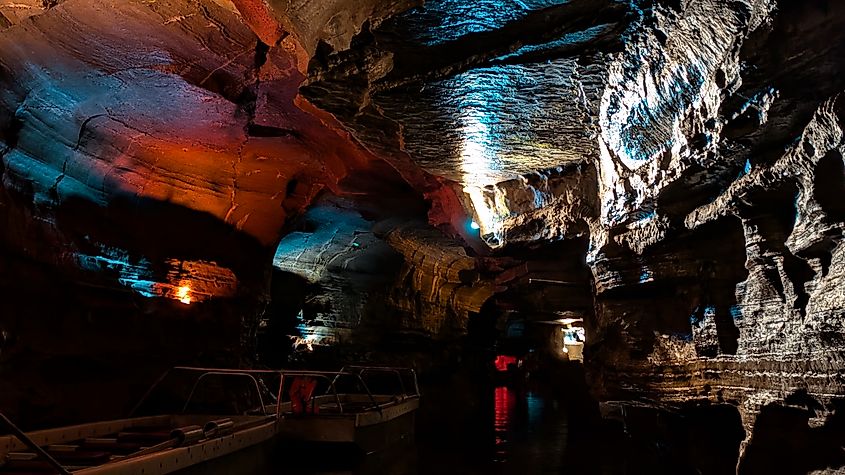
-
Number of Caves: About 800
-
Notable Caves: Howe Caverns, Secret Caverns, Taughannock Cave
While New York is better known for its mountains and rivers, it also hosts hundreds of limestone caves shaped over millions of years. Howe Caverns, near Albany, is a show cave featuring walkways and boat tours that wind through its underground river, revealing dramatic chambers and unique rock formations. Secret Caverns offers striking stalactites and stalagmites alongside historical mining artifacts, providing a glimpse into the human history intertwined with these natural wonders.
Many of New York’s caves also preserve evidence of glacial activity, making them rich sites for understanding the geological evolution of the northeastern United States. These subterranean landscapes attract both geology enthusiasts and curious travelers eager to experience a hidden side of the Empire State.
The Hidden Wonders Beneath Our Feet
From the limestone labyrinths of Tennessee and Kentucky to the sparkling crystal chambers of New York and Alabama, these states showcase some of the most extraordinary underground landscapes in the United States. Beyond their natural beauty, many caves preserve traces of human history, from Native American artifacts to centuries of mining and exploration. Each cavern offers a glimpse into the geological forces that shaped the land and the enduring mystery of what lies beneath the surface. America’s caves are not just natural formations; they are living museums, inviting curiosity, study, and awe from all who venture below.
Chart of Top Cave States
| Rank | State | Estimated Number of Caves | Notable Caves |
|---|---|---|---|
| 1 | Tennessee | 10,000+ | Ruby Falls, Lost Sea Cave, Cumberland Caverns |
| 2 | Missouri | 7,300 | Meramec Caverns, Fantastic Caverns, Onondaga Cave |
| 3 | Kentucky | 4,100 | Mammoth Cave, Lost River Cave, Cumberland Caverns |
| 4 | Alabama | 4,000 | Cathedral Caverns, DeSoto Caverns, Rickwood Caverns |
| 5 | West Virginia | 3,000 | Seneca Caverns, Organ Cave, Lost World Caverns |
| 6 | Pennsylvania | 3,000 | Laurel Caverns, Indian Caverns, Crystal Cave |
| 7 | Indiana | 1,200 | Bluespring Caverns, Squire Boone Caverns, Marengo Cave |
| 8 | New York | 800 | Howe Caverns, Secret Caverns, Taughannock Cave |
| 9 | Ohio | 750 | Ohio Caverns, Zanesville Caverns |
| 10 | Virginia | 700 | Luray Caverns, Skyline Caverns |
| 11 | Arkansas | 600 | Blanchard Springs Caverns, Onyx Cave |
| 12 | Florida | 500 | Devil’s Den, Florida Caverns |
